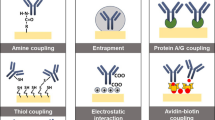Summary
The flame ionisation detector, introduced by McWilliam and Dewar, requires the use of high performance and complicated electronic systems, of its excellent properties for the trace detection and perfect quantitative operation are to be utilized in a wide range of concentrations.
Unfortunately, progress and sophistication in the field of electronics reduces the clarity and intelligibility of the circuits, this can result in mistakes and errors. This article tries to show the relationship between the most important electrical properties of the flame ionisation detector systems and the quantities determining these properties. After a short survey of the circuit variants, a transfer function is derived from the simple basic circuit diagrams and their equivalent circuits. With the aid of this function, characteristic quantities such as amplification ratio, linearity, drift, noise, detection limit, linearity range and dynamic range are discussed. At the same time, practical applications are considered.
Zusammenfassung
Der vonMcWilliam undDewar in die GC eingeführte Flammenionisationsdetektor (FID) macht die Verwendung von aufwendiger und komplizierter Hochleistungselektronik erforderlich, wenn seine hervorragenden Eigenschaften für den Spurennachweis und für einwandfreies quantitatives Arbeiten in einem weiten Konzentrationsbereich voll zur Geltung kommen sollen.
Leider wächst mit den Fortschritten im elektrischen Bereich, zumindest für den Nicht-Elektronik-Spezialisten, auch die Undurchschaubarkeit, was zu Mißverständnissen und Fehlern führen kann. In der vorliegenden Arbeit wird deshalb versucht, die Zusammenhänge zwischen den wichtigsten elektrischen Eigenschaften des Flammenionisations-Detektionssystems und den sie bestimmenden Größen aufzuzeigen.
Nach einem kurzen Überblick über die Schaltungsvarianten wird ausgehend von einfachen Prinzip-Schaltbildern und daraus abgeleiteten Ersatzschaltbildern die Übertragungsgleichung eines häufig angewendeten Systems angegeben. Anhand dieser Gleichung werden die Kenngrößen, Übersetzungsverhältnis, Linearität, Drift, Rauschen, Nachweisgrenze, Linearbereich und dynamischer Bereich, diskutiert. Dabei wird versucht, Nutzanwendungen für die Praxis zu finden.
Résumé
Le détecteur à ionisation de flamme (DIF), introduit en chromatographie par McWilliam et Dewar, nécessite des systèmes électroniques très évolués et compliqués quand on désire exploiter ses qualités extraordinaires pour la détection de traces et pour un fonctionnement quantitatif parfait dans une grande gamme de concentration.
Malheureusement, les progrès dans le domaine électrique sont accompagnés par une diminution de la clarté et de la compréhensibilité de l'ensemble, ce qui peut conduire, du moins ceux qui ne sont pas des spécialistes en électronique, à des malentendus et à des erreurs. Cet article vise à mettre en évidence montrer les relations entre les propriétés électriques principales des systèmes de détecteurs à ionisation de flamme et les paramètres qui les définissent.
Après une breve vue d'ensemble des variations de circuits, à partir de schémas de principe et leurs circuit équivalents on explique les fonctions de transfert pour système d'utilisation fréquente. En partant de ces fonctions, on discutera les grandeurs caractéristiques, le rapport de conversion, la linéarité, le „drift”, le bruit de fond, la limite de détection, le domaine linéairé et le domaine dynamique. On donnera des exemples d'application pratique.
Similar content being viewed by others
Abbreviations
- CD :
-
Detektorkapazität [F]
- CK :
-
Kabelkapazität [F]
- Cv :
-
Verstärkereingangskapazität [F]
- Cq :
-
Zusammenfassung der Störkapazitäten CD, CK und Cv [F]
- \(\partial U_z /\partial I_D \) :
-
Innenwiderstand des FID [Ω]
- Ev :
-
Übersetzungsverhältnis eines FID-Verstärkers [A]
- Δf:
-
Bandbreite [Hz]
- ID :
-
FID-Signalstrom [A]
- IK :
-
Kompensationsstrom [A]
- Io :
-
Grundionisationsstrom (Nullstrom) [A]
- IS :
-
eingeprägter Störstrom (Störstromquelle) [A]
- Ivib :
-
Mikrofonie-Störstrom [A]
- k:
-
Boltzmannsche Konstante\(\left[ {\frac{{Ws}}{{^O K}}} \right]\)
- KI :
-
Proportionalitätskonstante für Stromverstärker [ohne Dimension]
- KU :
-
Proportionalitätskonstante für Spannungsverstärker [ohne Dimension]
- NG:
-
Nachweisgrenze [A]
- Q:
-
Massendurchsatz [g/s]
- RB :
-
Ersatzwiderstand für Anzeige- bzw. Auswerte-system [Ω]
- R1 :
-
Eingangswiderstand des gegengekoppelten Verstärkers [Ω]
- Re :
-
Eingangswiderstand des nicht gegengekoppelten Verstärkers [Ω]
- Rg :
-
Gegenkopplungswiderstand [Ω]
- RIA :
-
Isolationswiderstand zwischen beiden Polarisations-elektroden [Ω]
- RID :
-
Isolationswiderstand zwischen Düse und Detektorgehäuse [Ω]
- RIK :
-
Isolationswiderstand des Signalkabels [Ω]
- RIV :
-
Isolationswiderstand des Verstärkereingangs [Ω]
- RK :
-
Widerstand zur Einprägung von IK[Ω]
- RM :
-
Meßwiderstand [Ω]
- Rq :
-
wirksamer Quellenwiderstand [Ω]
- Rv :
-
Rauschband eines Verstärkers [A]
- S:
-
Spannungsteilerfaktor [dimensionslos]
- T:
-
Spannungsteilerfaktor [dimensionslos]
- TK :
-
Temperatur [0K]
- üD :
-
Übersetzungsverhältnis des FID [A·s/g]
- üe :
-
Übersetzungsverhältnis des Stromverstärkers [V/A]
- üv :
-
Übersetzungsverhältnis des stark vereinfachten Stromverstärkers [V/A]
- Ua :
-
Verstärkerausgangsspannung [V]
- Ue :
-
Verstärkereingangsspannung [V]
- UEv :
-
Untere Nachweisgrenze eines Verstärkers [A]
- UK :
-
Kompensationsspannung zur Erzeugung von IK[V]
- UM :
-
Meßspannung [V]
- Uo :
-
Spannungsquelle zur Kompensation von US [V]
- (UR)eff :
-
Effektivwert der Rauschspannung [V]
- US :
-
eingeprägte Störspannung (Störspannungsquelle) [V]
- V:
-
Spannungsverstärkung [ohne Dimension]
Literatur
McWilliam, I. G., Dewar, R.A., Nature (London)181 (1958) S. 760
McWilliam, I. G., Dewar, R. A. in Gas Chromatography 1958, ed. D. H. Desty, Butterworths London (1958) S. 142
Thompson, A. E., J. Chromatog.,2 (1959), S. 148
Merz, L., Archiv f. Elektrotechnik, XXXI. Band 1937, S. 1
Engl, W., Archiv f. Elektrotechnik, XLVIII. Band 1963. 2. Heft, S. 69
Arnolds, F. A.T.M. Blatt Z 631–8 (Januar 1968), S. 15
Hole, R. D. Electronic Engineering, Dec. 1960, S. 770
Perls, T. A., J. Appl. Phys.23, 674 (1952)
Kaiser, R., Chromatographie in der Gasphase, II, Bibliographisches Institut, Mannheim, S. 255
Ongkiehong, L., Gas Chromatography 1960, ed R.P.W. Scott, Butterworths London (1960), S. 7
McWilliam, I. G., J. Chromatography,6 (1961) S. 110
Dewar, R. A., J. Chromatography,6 (1961) S. 312
Oster, H., Siemens-Zeitschrift,37 1963, Heft 6, S. 481
Kaiser, R., Chromatographie in der Gasphase II, S. 256
Author information
Authors and Affiliations
Rights and permissions
About this article
Cite this article
Knapp, O. Diskussion der elektrischen Eigenschaften von Flammenionisations-Detektionssystemen für die Gas-Chromatographie. Chromatographia 2, 67–73 (1969). https://doi.org/10.1007/BF02341320
Received:
Accepted:
Issue Date:
DOI: https://doi.org/10.1007/BF02341320



